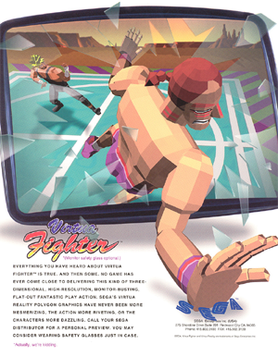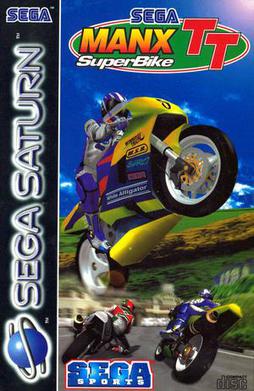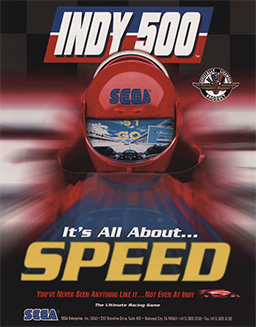Related Research Articles

The 32X is an add-on for the Sega Genesis video game console. Codenamed "Project Mars", it was designed to expand the power of the Genesis and serve as a transitional console into the 32-bit era until the release of the Sega Saturn. The 32X uses its own ROM cartridges and has its own library of games. It was distributed under the name Super 32X in Japan and South Korea, Genesis 32X in North America, Mega 32X in Brazil, and Mega Drive 32X in all other regions.

The Sega Saturn is a home video game console developed by Sega and released on November 22, 1994, in Japan, May 11, 1995, in North America, and July 8, 1995, in Europe. Part of the fifth generation of video game consoles, it is the successor to the successful Genesis. The Saturn has a dual-CPU architecture and eight processors. Its games are in CD-ROM format, including several ports of arcade games and original games.

Virtua Fighter is a fighting game created for the Sega Model 1 arcade platform by AM2, a development group within Sega, headed by Yu Suzuki. An early prototype version was location tested in Japan by August 1993, before the complete game was released worldwide in December 1993. It is the first game in the Virtua Fighter series, and the first arcade fighting game to feature fully 3D polygon graphics. The game has been ported to several platforms including the Sega Saturn, Sega 32X, and Microsoft Windows.

Virtua Cop is a 1994 light gun shooter game developed by Sega AM2 and designed by Yu Suzuki. It was originally an arcade game on the Sega Model 2 system, and was ported to the Sega Saturn in 1995 and Windows in 1996. The Saturn version included support for both the Virtua Gun and Saturn mouse, as well as a new "Training Mode" which consists of a randomly generated shooting gallery.

Yu Suzuki is a Japanese game designer, producer, programmer, and engineer, who headed Sega's AM2 team for 18 years. Considered one of the first auteurs of video games, he has been responsible for a number of Sega's arcade hits, including three-dimensional sprite-scaling games that used "taikan" motion simulator arcade cabinets, such as Hang-On, Space Harrier, Out Run and After Burner, and pioneering polygonal 3D games such as Virtua Racing and Virtua Fighter, which are some of the games besides others from rival companies during that era credited with popularizing 3D graphics in video games; as well as the critically acclaimed Shenmue series. As a hardware engineer, he led the development of various arcade system boards, including the Sega Space Harrier, Model 1, Model 2 and Model 3, and was involved in the technical development of the Dreamcast console and its corresponding NAOMI arcade hardware.

Sega Rally Championship is a 1994 racing game developed by Sega AM3 and published by Sega. Originally released for arcades using the Sega Model 2 board, ports were published for the Sega Saturn in 1995 and Microsoft Windows in 1997. Sega Rally Championship simulates driving on different surfaces, with different friction properties, with the car's handling changing accordingly. As the first racing game to incorporate this feature, Sega Rally Championship is considered to be one of the milestones in the evolution of the racing game genre. It was also an early rally racing game and featured cooperative gameplay alongside the usual competitive multiplayer.

X-Men vs. Street Fighter is a crossover fighting video game developed and published by Capcom. It is Capcom's third fighting game to feature Marvel Comics characters, following X-Men: Children of the Atom and Marvel Super Heroes, and is the first installment in the Marvel vs. Capcom series. As the title suggests, the game includes characters from Marvel's X-Men franchise and the cast from Capcom's Street Fighter series. Originally released as a coin-operated arcade game in 1996, it was ported to the Sega Saturn in 1997 and the PlayStation in 1998. The original arcade release is included in the game lineup for the upcoming Marvel vs. Capcom Fighting Collection: Arcade Classics compilation for Nintendo Switch, PlayStation 4 and Windows, scheduled for release in 2024.

Sega AM Research & Development No. 3, known as Hitmaker Co., Ltd. from 2000 to 2004, is a defunct division of Sega, a Japanese video game company. Established by 1993, AM3 was managed by Hisao Oguchi and developed a number of arcade games for Sega. Series introduced by AM3 include Virtual On, Sega Rally, Crazy Taxi, and Virtua Tennis. AM3's main focus was on arcade games until the release of the Dreamcast. Additionally, developers Tetsuya Mizuguchi and Kenji Sasaki developed Sega Rally Championship with AM3 before departing to form AM Annex, which later split into Sega AM9 and Sega AM5.

Sega AM Research & Development No. 2, previously known as SEGA-AM2 Co., Ltd., is a video game development team within the Japanese multinational video game developer Sega. Yu Suzuki, who had previously developed arcade games for Sega including Hang-On and Out Run, was the first manager of the department.

Virtua Striker is a series of association football sports video games released by Sega for arcades. Originally developed by Sega AM2 from 1994 to 1999, the series moved to Amusement Vision with Virtua Striker 3, but it later moved to Sega Sports Design R&D Dept. with Virtua Striker 4.

Virtua Fighter 2 is a 1994 fighting video game developed by Sega. It is the sequel to Virtua Fighter (1993), and the second game in the Virtua Fighter series. It was created by Sega's Yu Suzuki-headed AM2 and was released for arcades in 1994. Ports were released for the Sega Saturn in 1995 and Microsoft Windows in 1997.

F1 Challenge is an officially licensed Formula One game developed by Bell Corporation and produced by Sega for the Sega Saturn. The game contains only three of the many Formula One circuits – Hockenheim, Monte Carlo, and Suzuka – while having another three based on the fictional Neo City, containing three different configurations.

Virtua Fighter 3 is the sequel to 1994's Virtua Fighter 2 and the third fighting game in the Virtua Fighter series, developed and published by Sega in 1996. It was the first arcade game to run on the Sega Model 3 system board.

The Lost World: Jurassic Park is a light gun arcade game from Sega. It was released in 1997, and is based on the film of the same name. It is also a sequel to Sega's 1994 Jurassic Park arcade game. A third Jurassic Park arcade game, based on Jurassic Park III, was made by Konami in 2001.
Virtua Fighter is a series of fighting games created by Sega AM2 and designer Yu Suzuki. The original Virtua Fighter was released in December 1993 and has received four main sequels and several spin-offs. The highly influential first Virtua Fighter game is widely recognized as the first 3D fighting game released.

Manx TT Super Bike is a 1995 arcade racing game developed jointly by Sega AM3 and Sega-AM4. It is a motorcycle racing game built for the Sega Model 2 arcade board. Up to 8 players can race in this game if enough arcade cabinets are linked together, following on from Daytona USA. It was later ported to the Sega Saturn by Tantalus Interactive and to Windows by Perfect Entertainment.

Sega Bass Fishing, known in Japan as Get Bass, is an arcade fishing video game developed in 1997 by Sega for the Sega Model 3 hardware. The game has since been ported to the Dreamcast, Microsoft Windows, Xbox 360, PlayStation 3 and Wii.

Indy 500 is a 1995 arcade racing game developed by Sega AM1. Based on the IndyCar Series, the game possesses a license from the Indianapolis Motor Speedway, home of the Indianapolis 500, and includes the speedway as one of its courses. Indy 500 was AM1's second game developed using 3D computer graphics and their first to utilize color textures. While planned as a Model 3 arcade system board release, delays in the hardware's completion led to use of the Model 2 instead. A Sega Saturn port was planned, but later canceled. Reception to Indy 500 was mixed, with some critical comparison to other games such as Sega AM2's Daytona USA and Namco's Ace Driver and Rave Racer.

Sega Corporation is a Japanese multinational video game company and subsidiary of Sega Sammy Holdings headquartered in Shinagawa, Tokyo. It produces several multi-million-selling game franchises for arcades and consoles, including Sonic the Hedgehog, Angry Birds, Puyo Puyo, Super Monkey Ball, Total War, Virtua Fighter, and Yakuza. From 1983 until 2001, Sega also developed its own consoles.
References
- 1 2 "Finals". Next Generation . No. 32. Imagine Media. August 1997. p. 126.